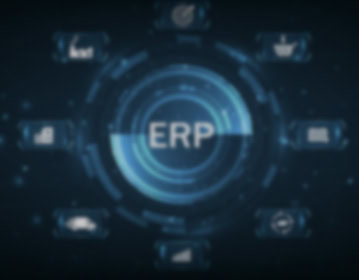
This blog was originally published in July 2020 and was updated in June 2024
Many organizations around the world are familiar with independent, third-party support. Many others are not. Still others have some preconceived notions about what it is and how it helps.
What is Third-Party Support? A simple definition.
Third-party support is software support for applications and databases that replaces vendor software support that is often packaged with the software purchase. Third-party support clients typically select this option to attain more comprehensive and responsive support than what their vendor provides.
Third-party software support offers comprehensive level 4 support that covers troubleshooting, integration, interoperability, performance, break/fix support, and expert guidance for databases and software systems. Additional features include dedicated primary support engineers, support for custom code, tax, legal, and regulatory updates, and guaranteed response and communication SLA’s.
A (not-so) brief history of Third-Party Support
Third-party support for applications and databases from vendors such as Oracle and SAP has been a viable alternative to annual vendor maintenance and support contracts for years. That market was disrupted in 2005 as new business models and third-party support providers got started.
Some organizations jumped at the chance to reduce annual support expenses and get better, broader coverage. Those early adopters of 3rd party software support paved the way for billions of dollars in total savings across thousands of organizations over the last 19 years.
Independent support services have grown in popularity in the last few years. There are many reasons for this acceleration of interest in third-party support — they all go back to the fundamental differences between vendor support and third-party support. More on those in a moment.
Vendor Support vs Third-Party Support
Starting off with something they have in common: Enterprise software support helps an organization minimize business disruption and maximize business value from the software applications it uses to run the business.
If those goals were always being achieved for all Oracle and SAP licensees, then there probably wouldn’t be a need for third-party support. Ah, but that wasn’t the case. Many organizations were taking a long, hard look at the costs and benefits of staying on vendor maintenance contracts, and they found that the costs outweighed the benefits. And that negative number was getting bigger over time. Licensees felt they were getting less for more — never a good thing.
Where there’s an unmet business need, there’s an opening for a new solution or even a market disrupter. Enter 3rd party software support.
A third-party support services provider has a completely different business model than a software publisher. Oracle and SAP generally have large portions of their revenue derived from maintenance contracts and a disproportionately small amount of their expenses going to support activities. Support profits can grow to over 90%,2 with a large portion of the money typically going to fund new products and future releases.
By contrast, leading third-party support providers derive a healthy yet reasonable gross margin on support revenue while investing in people and technology that produce a superior support experience.
And that can be done at 50% less than the annual cost of maintenance fees to the clients.

Why do organizations switch to 3rd party support from vendor support?
There are many reasons why organizations switch to third-party software support instead of continuing to receive support from their vendor. These reasons include cost savings, faster resolution times, the need to extend the life of their software releases beyond what the vendor can offer, and greater flexibility.
Cost Savings
From an organization’s perspective, cost is the most obvious difference between software vendor support and third-party support services. Most organizations that switch to 3rd party software support quickly save at least 50% on annual support fees. Additional costs can be reduced or avoided, yielding up to 90% in total savings. They include the costs of supporting customizations (the software vendors typically don’t cover that), the costs of self-support when the vendor’s support is unresponsive or not comprehensive enough, and the cost of forced upgrades or migrations just to stay on a fully supported release.
Faster Resolution Times
When mission-critical systems experience downtime, rapid support response times are crucial. Vendor support often cannot provide fast resolution times, especially if a client has not stayed up to date with the newest release. Clients are often directed to self-service portals to find the answer to their question, delaying resolution times. 3rd party support providers have expert engineers who are more likely to respond and resolve critical issues much faster than a vendor can.
The Need to Extend the Life of Software Systems
Third-party software support also extends the life of software releases by providing support for many years after the vendors stop providing full support. This allows organizations to maximize the lifespan of their technology investments, and ensure minimal disruption to critical business processes.
Greater Flexibility
Clients of 3rd party support for enterprise software, such as SAP and Oracle products, have more agility and freedom to pursue – and fund – innovation. When an organization is no longer locked into a vendor-dictated roadmap, it liberates budget and resources to pursue its own business priorities—its business-driven roadmap.
IT roadmaps: Vendor-dictated or Business-driven?
There was a time — perhaps a decade or two ago — when ERP applications from Oracle and SAP were gaining significant new functionality with every major release. The platforms were still growing into the full footprint of financials, operations, CRM, supply chain management, and human capital management that they were intending to cover. Then they matured and gained stability while the functionality expansion slowed. These suites of applications are now working behind the scenes in organizations around the world and across most industries. They are the software workhorses of modern business.
So why does an organization need to continue to spend the same (or increasing) amount of money for annual support than in the beginning when applications were new, less stable, and rapidly expanding? Because the vendors haven’t let licensees off the hook. They continue to charge more and more for support while requiring the licensees to stay on current releases with regular upgrades to stay fully supported. Licensees that have fallen behind have generally been relegated to reductions in support privileges (sometimes called “sustaining support”) or worse.
While it is true that staying on the vendor’s annual maintenance contract gives licensees the rights to future enhancements, what the software vendor decides to put into any particular release may or may not be important to them. That’s what is meant by a “vendor-dictated” roadmap. If you stay on full support from the vendor, you can have the enhancements. But they too are like a box of chocolates — “you never know what you’re gonna get.”
To sum up the 3rd party support definition:
3rd party support provides an enhanced support and services experience that can be more comprehensive than software vendor support. It costs less straight away, avoids related costs, and allows for more freedom in pursuing business innovation priorities.
There — just under 1,000 words. And speaking volumes.
Get the Facts on Third-Party Support in our Free eBook
Want to learn more? Download our free comprehensive guide to learn how 3rd party software support helps organizations:
- Gain the service, savings, and strategic flexibility needed to follow a business-driven IT roadmap.
- Turn the 20-22% of software license costs spent annually on vendor support into savings — up to 90% in total cost savings.
- Access more responsive, follow-the-sun support for critical issues resulting in less time troubleshooting and more time to innovate.





